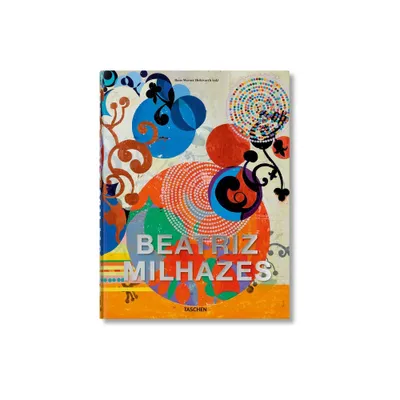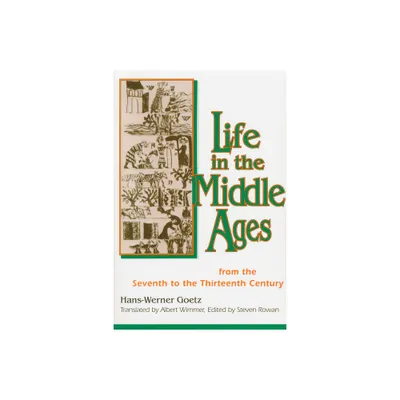Home
Hans Werner Henze: Drei sinfonische et¿¿den; Quattro poemi; Machtst¿¿cke und arien; La selva incantata
Loading Inventory...
Barnes and Noble
Hans Werner Henze: Drei sinfonische et¿¿den; Quattro poemi; Machtst¿¿cke und arien; La selva incantata
Current price: $20.99


Barnes and Noble
Hans Werner Henze: Drei sinfonische et¿¿den; Quattro poemi; Machtst¿¿cke und arien; La selva incantata
Current price: $20.99
Loading Inventory...
Size: OS
*Product Information may vary - to confirm product availability, pricing, and additional information please contact Barnes and Noble
The four selections on this essential volume, all performed by
the NDR Sinfonieorchester
and conducted by
Peter Ruzika
, represent distinct periods in composer
Hans Werner Henze
's long and varied career; they are all turning points, so to speak, beginning with
"Drei Sinfonische Etueden"
(Three Symphonic Studies). These are the first of his orchestral pieces that employed the use of serial technique in 1955. While they are somewhat representative of the influence of the second Viennese school, they also reflect the work of composer such as
Paul Hindemith
in their transitory intervals and
Darius Milhaud
in his colored impressionist period. The restraint of the latter two composers is evident in the first of the studies, where the drama of
Webern
and middle-period
Berg
reveal themselves as language possibilities in the second and third, as rhythm and dynamic considerations are treated serially without engaging the systems of "old harmony" at all. The second etude, which was reworked in 1964, is far more dynamic in scope and practical as serial technique to the point of dogmatism. Note the fortissimo in the upper range of the bassoon. The
"Quatrro Poemi"
("Four Poems") was composed in 1954. The poems were composed at the same time as an opera by
Henze
entitled
Koenig Hirsch
, and each of them reflects tonally and harmonically the narrative sequences from the
opera
, In fact, as tone poems they almost seem to be cadenzas written for the end of each act and prefiguring, or foreshadowing, the proceeding one. The mood is plaintive, restrained, and even somber, color palettes are narrow and the only real movement, in the second piece, is where percussion makes a brief appearance to keep the narrative of the works static. Their roots sources borrow from the myth in the
and from German
folksongs
sung by goat herders at the turn of the century. The most controversial and perhaps satisfying work here is the
"Nachstuecke und Arien,"
("Nocturnes and Arias"). It's premier caused the walkout of Stockhausen, Boulez, and Nono, and caused the program's director to give
the cold shoulder. The reason? Here,
abandons serialism and embraces the texts of
Inge Bachmann
as they were written: to be the "mirror of a beautiful past." Given modernism's harsh rigidity at the time, and the piece's hearkening back to periods that echo
Bruckner
and
Mahler
, it is no wonder that the trio of "spirits" of the age stalked out after 13 measures. No matter, the work is stunning with a rich palette that doesn't ignore serialism or other techniques, just subdues them in the lush harmonic quilt of the nocturnes. Had the triumvirate stuck around, they would have heard the beautiful evocation of
Schoeenberg
's Pierrot Lunaire and Verklarte Naechte and late
Hindemith
's song structures. The work was based around an idea for a short
based on a text by
Cocteau
, and in its dreamy surreality, where winds and strings hold shimmering glissandi behind the soprano it is easy to hear why. This work is, with the possible exception of members of the New York School, as pure a union of poetry and music as existed in the latter part of the 20th century. The final work is the
aria
rondo
from
, the
"La Selva Incantata,"
("The Enchanted Forest"). Using the inspiration from
's
Lulu
, he transposed a tenor
from the fourth scene of second act for orchestra and added music from the third and second scenes -- in that order -- and created an orchestral enchanted forest that for its brevity (11 minutes) is among the composer's most beautiful compositions ever. Movement and color are the hallmarks with dynamic rushes of brass and the swirl of woodwinds sweeping through their brash statements andante before giving way to a lush pianissimo song by the French horn and bassoon together creeping through the silence of the score until they find what they are looking for. When the enchantment occurs, all darkly festive and colored by strings and reeds until bassoon's and brass march through the finale with grim purpose toward an unknown future. As mentioned earlier, this is a stunning introduction to a prolific composer's body of work, brilliantly illustrating via stellar performances and crystalline sound. ~ Thom Jurek
the NDR Sinfonieorchester
and conducted by
Peter Ruzika
, represent distinct periods in composer
Hans Werner Henze
's long and varied career; they are all turning points, so to speak, beginning with
"Drei Sinfonische Etueden"
(Three Symphonic Studies). These are the first of his orchestral pieces that employed the use of serial technique in 1955. While they are somewhat representative of the influence of the second Viennese school, they also reflect the work of composer such as
Paul Hindemith
in their transitory intervals and
Darius Milhaud
in his colored impressionist period. The restraint of the latter two composers is evident in the first of the studies, where the drama of
Webern
and middle-period
Berg
reveal themselves as language possibilities in the second and third, as rhythm and dynamic considerations are treated serially without engaging the systems of "old harmony" at all. The second etude, which was reworked in 1964, is far more dynamic in scope and practical as serial technique to the point of dogmatism. Note the fortissimo in the upper range of the bassoon. The
"Quatrro Poemi"
("Four Poems") was composed in 1954. The poems were composed at the same time as an opera by
Henze
entitled
Koenig Hirsch
, and each of them reflects tonally and harmonically the narrative sequences from the
opera
, In fact, as tone poems they almost seem to be cadenzas written for the end of each act and prefiguring, or foreshadowing, the proceeding one. The mood is plaintive, restrained, and even somber, color palettes are narrow and the only real movement, in the second piece, is where percussion makes a brief appearance to keep the narrative of the works static. Their roots sources borrow from the myth in the
and from German
folksongs
sung by goat herders at the turn of the century. The most controversial and perhaps satisfying work here is the
"Nachstuecke und Arien,"
("Nocturnes and Arias"). It's premier caused the walkout of Stockhausen, Boulez, and Nono, and caused the program's director to give
the cold shoulder. The reason? Here,
abandons serialism and embraces the texts of
Inge Bachmann
as they were written: to be the "mirror of a beautiful past." Given modernism's harsh rigidity at the time, and the piece's hearkening back to periods that echo
Bruckner
and
Mahler
, it is no wonder that the trio of "spirits" of the age stalked out after 13 measures. No matter, the work is stunning with a rich palette that doesn't ignore serialism or other techniques, just subdues them in the lush harmonic quilt of the nocturnes. Had the triumvirate stuck around, they would have heard the beautiful evocation of
Schoeenberg
's Pierrot Lunaire and Verklarte Naechte and late
Hindemith
's song structures. The work was based around an idea for a short
based on a text by
Cocteau
, and in its dreamy surreality, where winds and strings hold shimmering glissandi behind the soprano it is easy to hear why. This work is, with the possible exception of members of the New York School, as pure a union of poetry and music as existed in the latter part of the 20th century. The final work is the
aria
rondo
from
, the
"La Selva Incantata,"
("The Enchanted Forest"). Using the inspiration from
's
Lulu
, he transposed a tenor
from the fourth scene of second act for orchestra and added music from the third and second scenes -- in that order -- and created an orchestral enchanted forest that for its brevity (11 minutes) is among the composer's most beautiful compositions ever. Movement and color are the hallmarks with dynamic rushes of brass and the swirl of woodwinds sweeping through their brash statements andante before giving way to a lush pianissimo song by the French horn and bassoon together creeping through the silence of the score until they find what they are looking for. When the enchantment occurs, all darkly festive and colored by strings and reeds until bassoon's and brass march through the finale with grim purpose toward an unknown future. As mentioned earlier, this is a stunning introduction to a prolific composer's body of work, brilliantly illustrating via stellar performances and crystalline sound. ~ Thom Jurek


















